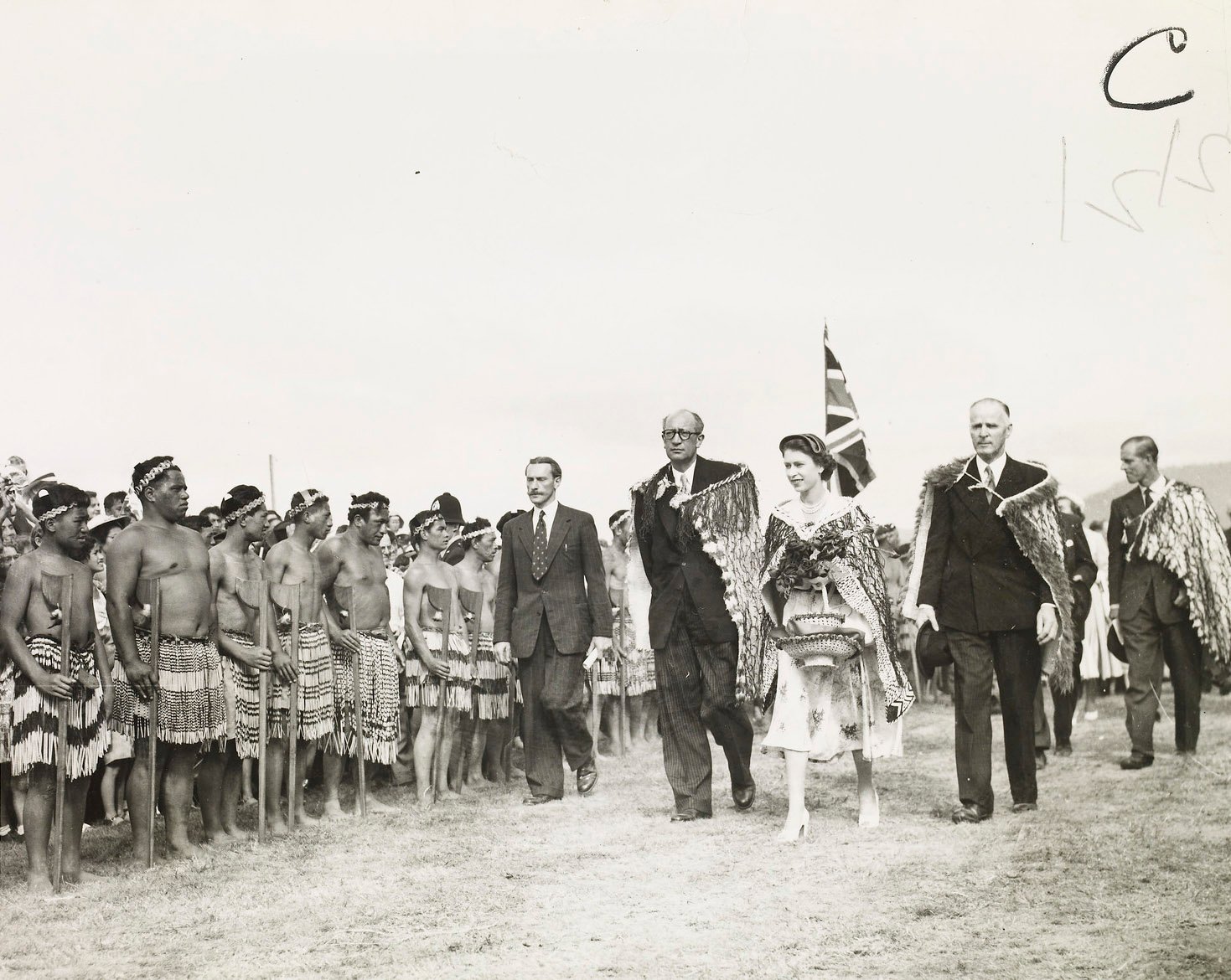Maori Works of Art in the Royal Collection
Gifts and treasures from New Zealand

The rich and varied Maori works of art in the Royal Collection span the full 250-year history of Anglo-Maori relations. The earliest piece is a hei-tiki pendant acquired in 1769 by Captain James Cook, the first known Englishman to encounter the indigenous peoples of New Zealand. Since that time, Maori works have been collected and presented on important occasions, including after the Treaty of Waitangi in 1840, when sovereignty of New Zealand was ceded to the British Crown, and throughout the conflicts of 1845–72.
A traditional Maori welcome (pōwhiri) later became a central feature of the royal visits to New Zealand, which began in earnest in the early twentieth century. These ceremonies were almost always accompanied by gifts of the finest Maori craftsmanship. During her reign, The Queen (b. 1926) has also travelled frequently to the islands for local anniversaries and events, as well as during her Silver and Golden Jubilee tours. As a result, Maori works of art in the Collection represent a range of interactions from first encounter to diplomatic engagement, empire and modern Commonwealth.
All have in common their status as taonga, or 'treasures', cherished by Maori for their cultural value and artistic excellence. Many are objects of chiefly status, imbued with the mana (authority) of the senior Maori who use them. Among them are feather capes, orators' staffs and treasure boxes (papahou). Each represents the close relation of Maori people and objects, with works of art thought to absorb the power and prestige of their owners. As a result, these specimens of craftsmanship are considered tapu (sacred, or distinct from ordinary things). Objects of this kind are also honoured with their own names and histories, such as a club called 'Budding Cloud', which was presented in 1964.
Together these works of art reflect the finest materials and techniques developed by Maori since their settlement of Aotearoa (New Zealand) in c.1200 AD. Wood carving has long been practiced on the islands thanks to the ready availability of totara timber, which is durable and easy to shape. The Collection consequently contains numerous staffs, model canoes and miniature meeting houses of local wood, each decorated with bands of carving in imitation of body tattoos (ta moko) or with stylised anthropomorphic figures with bulging eyes and protruding tongues. Many are also inlaid with mother of pearl. Nephrite, a New Zealand greenstone, features heavily in tools and precious ornaments like mere (clubs) and hei-tiki (pendants). Among the finest examples of Maori weaving tradition are two cloaks given to Queen Victoria (1819–1901) in the mid-nineteenth century.
Click on an object to find out more.




